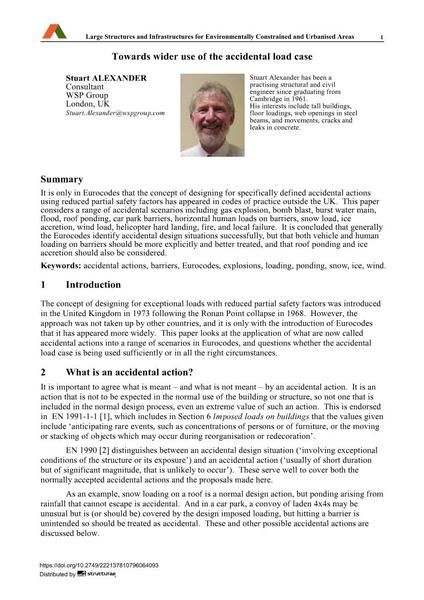Towards wider use of the accidental load case

|
|
|||||||||||
Bibliografische Angaben
| Autor(en): |
Stuart Alexander
|
||||
|---|---|---|---|---|---|
| Medium: | Tagungsbeitrag | ||||
| Sprache(n): | Englisch | ||||
| Tagung: | IABSE Symposium: Large Structures and Infrastructures for Environmentally Constrained and Urbanised Areas, Venice, Italy, 22-24 September 2010 | ||||
| Veröffentlicht in: | IABSE Symposium Venice 2010 | ||||
|
|||||
| Seite(n): | 838-839 | ||||
| Anzahl der Seiten (im PDF): | 8 | ||||
| Jahr: | 2010 | ||||
| DOI: | 10.2749/222137810796064093 | ||||
| Abstrakt: |
It is only in Eurocodes that the concept of designing for specifically defined accidental actions using reduced partial safety factors has appeared in codes of practice outside the UK. This paper considers a range of accidental scenarios including gas explosion, bomb blast, burst water main, flood, roof ponding, car park barriers, horizontal human loads on barriers, snow load, ice accretion, wind load, helicopter hard landing, fire, and local failure. It is concluded that generally the Eurocodes identify accidental design situations successfully, but that both vehicle and human loading on barriers should be more explicitly and better treated, and that roof ponding and ice accretion should also be considered. |
||||
| Stichwörter: |
Wind Eis Wasseransammlung außergewöhnliche Einwirkungen
|
||||
